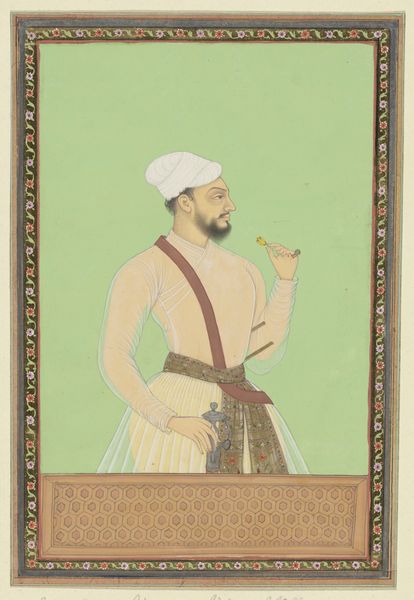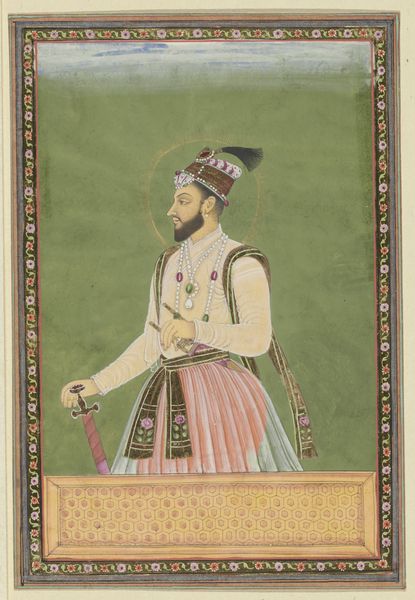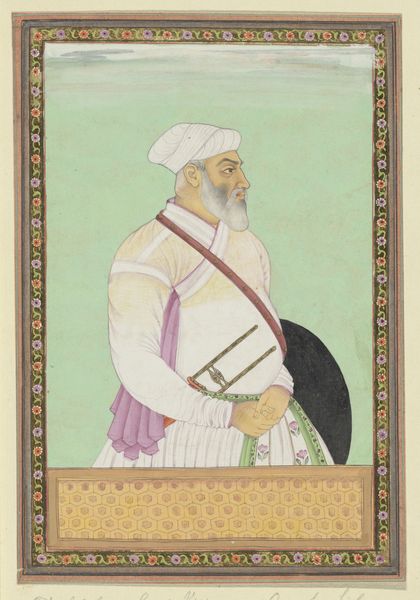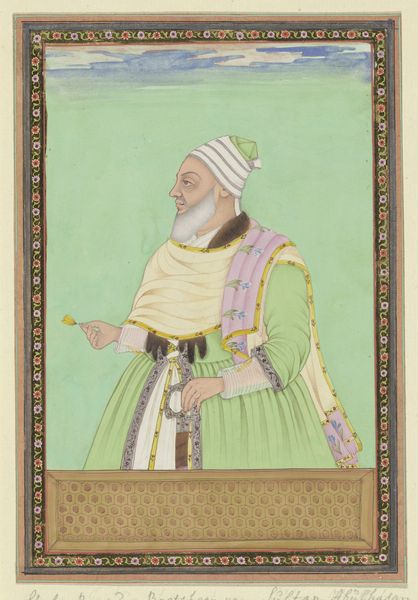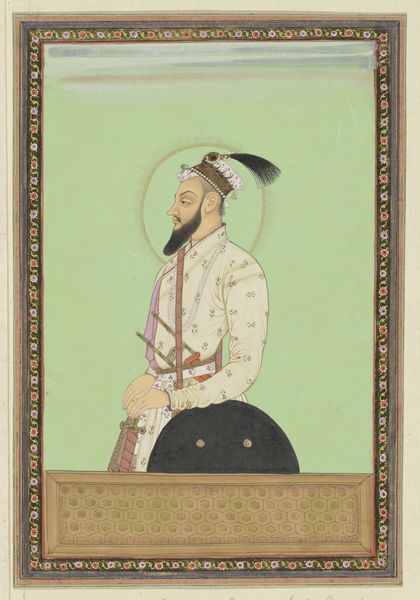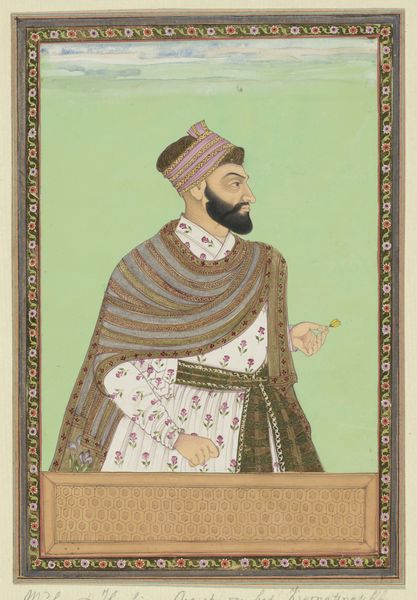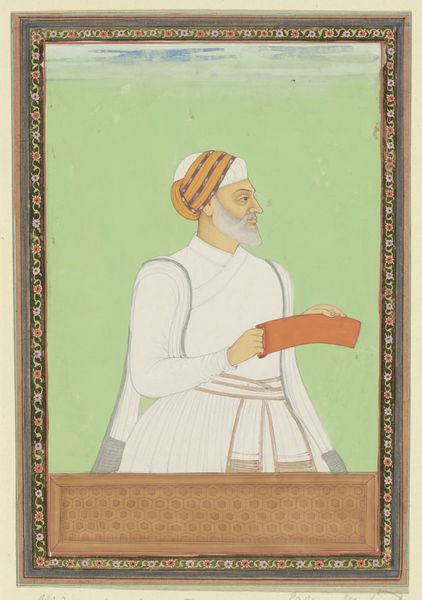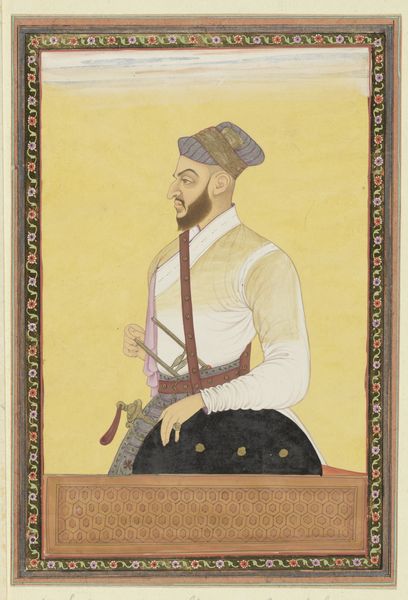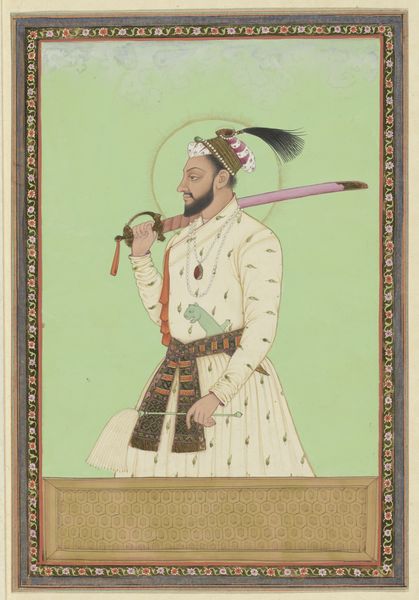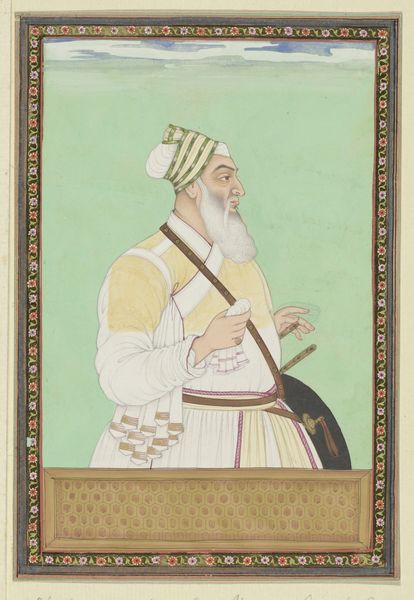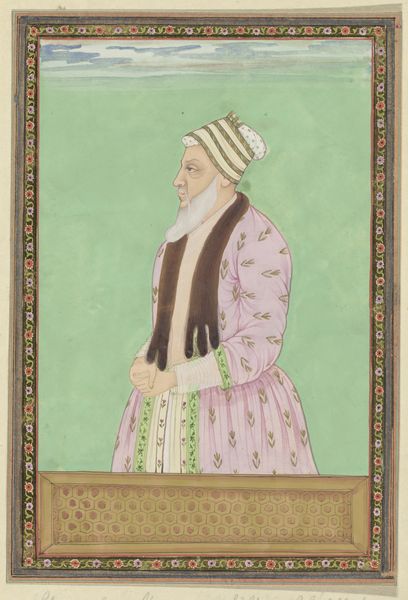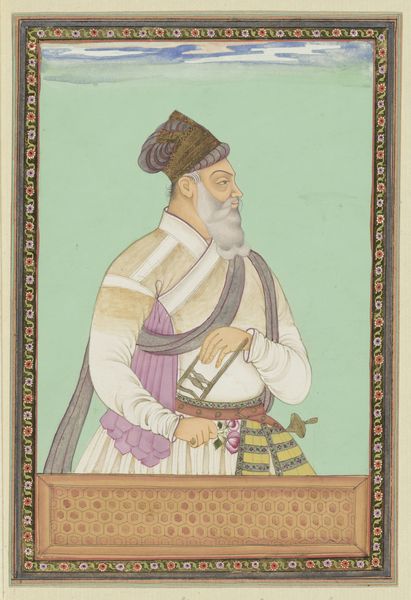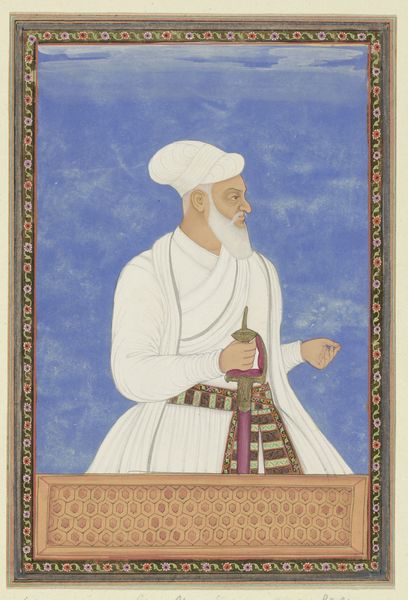
Portret van Bahlul-khan, de opperbevelhebber van Sultan Sikander, die thans heerser van Bijapur is c. 1686
0:00
0:00
painting, watercolor
#
portrait
#
water colours
#
narrative-art
#
painting
#
asian-art
#
figuration
#
watercolor
#
islamic-art
#
watercolour illustration
#
miniature
Dimensions: height 203 mm, width 140 mm
Copyright: Rijks Museum: Open Domain
Editor: So, this watercolor is called "Portret van Bahlul-khan, de opperbevelhebber van Sultan Sikander, die thans heerser van Bijapur is," it's from around 1686, and made by an anonymous artist. It's currently housed in the Rijksmuseum. I am immediately struck by how regal, yet serene, the subject looks. What stands out to you? Curator: The miniature tradition here allows us a concentrated glimpse into the subject’s world and ambitions through symbolic visual language. Notice how the figure occupies a space both defined and liberated by the decorative border. What do you make of the pale green backdrop? Editor: It almost feels like a dreamscape – unreal, perhaps hinting at the elevated status or idealization of the commander? Curator: Precisely. Consider how the subject holds a sword—a symbol of power and authority. However, its muted tones suggest restraint, hinting that the commander may value diplomacy and wisdom as well as military strength. The turban, what does that say to you? Editor: That would symbolize his religious faith, or cultural identity perhaps? The colour being white could also be seen as purity and peace, an interesting combination with the sword. Curator: Yes! And the katars tucked into his waist sash also signal bravery. Consider that they are instruments not typically worn to an audience. He's ready, isn’t he? This miniature is carefully constructed to present the individual, while also alluding to broader ideals of leadership. What a delicate balancing act, artistically. Editor: I see that. Thanks for pointing out the sword's muted color – I missed that initially. Curator: My pleasure. Seeing these symbols anew allows the painting to continue speaking across time. A fascinating visual memory, isn't it?
Comments
No comments
Be the first to comment and join the conversation on the ultimate creative platform.
